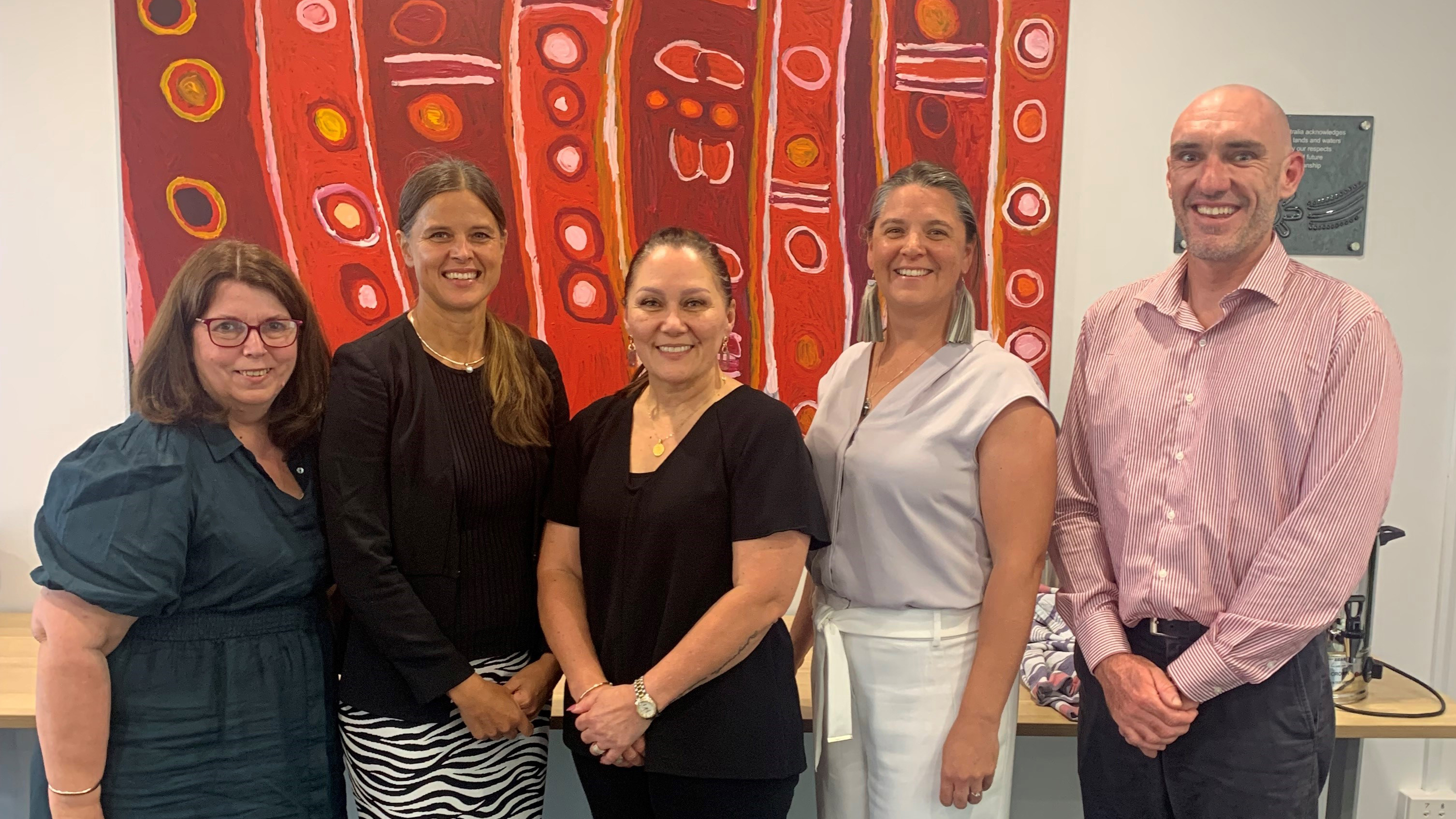A people-powered innovation and research activity at NAL
 The National Acoustic Laboratories is committed to finding ways to improve hearing health and transform the lives of people with hearing difficulties. Researchers at NAL use a “design thinking” approach to drive more people-centred research and identify future research needs. Typically, the process involves a discovery phase for gathering insights into a problem through the exploration of needs, motivations and barriers for people with lived experience of hearing loss (Yock et al 2015). When designing research projects, the NAL staff routinely take part in intensive group learning activities known as “sprints” (design thinking approach) that last for about six to eight weeks to capture this information and leave behind their own assumptions and biases in order to empathise with this population and identify the difficulties and experiences for their perspective. One sprint involved six staff of diverse backgrounds (audiology, engineering, speech pathology, technical) working together, with the aim of gaining a better understanding of the characteristics of hearing loss in one ear – “unilateral hearing loss” – and the impact it has on the everyday life of adults. Here are the outcomes of this NAL learning activity.
The National Acoustic Laboratories is committed to finding ways to improve hearing health and transform the lives of people with hearing difficulties. Researchers at NAL use a “design thinking” approach to drive more people-centred research and identify future research needs. Typically, the process involves a discovery phase for gathering insights into a problem through the exploration of needs, motivations and barriers for people with lived experience of hearing loss (Yock et al 2015). When designing research projects, the NAL staff routinely take part in intensive group learning activities known as “sprints” (design thinking approach) that last for about six to eight weeks to capture this information and leave behind their own assumptions and biases in order to empathise with this population and identify the difficulties and experiences for their perspective. One sprint involved six staff of diverse backgrounds (audiology, engineering, speech pathology, technical) working together, with the aim of gaining a better understanding of the characteristics of hearing loss in one ear – “unilateral hearing loss” – and the impact it has on the everyday life of adults. Here are the outcomes of this NAL learning activity.
What is a unilateral hearing loss?
Unilateral hearing loss (UHL) refers to the condition of having no hearing difficulty (“normal” hearing) in one ear and a hearing loss in the other ear. The hearing loss can range from mild to profound in degree. UHL can be present from birth or occur at any age. Sometimes UHL can occur suddenly and may involve a complete loss of hearing in the affected ear. UHL can be caused by viral infections, Meniere’s disease, head or ear injuries, tumours and problems in the middle ear, for example, “otosclerosis” – which involves a stiffening of the tiny bone structure beyond the ear drum.
What is the impact of UHL?
It is widely accepted that listening with two ears is more effective than one. Research has shown that people with UHL face challenges in understanding speech in background noise and localising sound sources. To better understand the struggles of people who have unilateral hearing loss (UHL), a NAL sprint team was set up to explore this area using two qualitative approaches. Qualitative research focuses on people’s experiences and opinions. Interviews were conducted in person or via phone/Skype with adults who had UHL. An online survey, consisting of questions that complemented those asked in the interviews, was also used to capture responses from a wider audience of adults living with UHL.
A total of 14 adults with UHL participated in interviews, and 80 adults (34 females, 46 males) responded to the survey. Among these participants, 53% were located in the United States/Canada, 31% were from Australia, and the other 16% were from other countries (e.g., Netherlands, Vietnam, and India). Among these participants, 44% reported currently using a hearing device, and 32% reported that hearing loss was identified since birth. The causes for the UHL were diverse including meningitis, head trauma/accident, absence of auditory nerve, tumour, otosclerosis, microtia/atresia, Ménière’s disease, virus, mumps, measles and noise exposure. Information from interviews and surveys were combined and main issues for people were identified.
Impacts of UHL: Trends, Themes, and Stories
Listening in noise and localising sounds
The two most commonly reported impacts of UHL were difficulty listening in noise and difficulty telling which direction sound is coming from. Like people with hearing loss in both ears (bilateral hearing loss), interview and survey respondents reported having the most difficulty in loud environments and when there were lots of sound sources. One respondent stated, “Conversations can be unbearable, especially in loud places,” while another added, “I find it hard to listen when large groups of people are together and talking over each other.” Many participants reported perceiving that all sound sources originated from the side of their good ear. For example, one participant said, “I have a hard time telling what direction sound comes from if I can’t see the source of the noise.” Some respondents also mentioned having auditory “blind spots”, including a subject who said, “I feel almost like I’m blind on the left because I have no sense of someone being there and certainly can’t hear them.”
Listening Fatigue
Adults with UHL also reported experiencing fatigue from the increased concentration (or “cognitive load”) required during activities such as conversation in loud noise. One participant said, “By the end of the meal, my brain is usually exhausted from trying to hear everyone.”
Emotional impacts
The psychological impacts of UHL reported by respondents were very significant and varied widely. Most interview and survey respondents indicated that they believed their mental health was impacted by their UHL. People expressed emotions such as fear and anxiety. One respondent was particularly concerned that their own safety, or the safety of those around them, might be at risk due to their hearing impairment. “I’m concerned about being in a situation where someone I love is in danger and my directional hearing affects it.” Participants were also afraid of losing hearing in their good ear and the potential further consequences of such a loss. Others feared family or social abandonment due to the perception that their UHL made them a burden or annoyance to those around them. One participant voicing this fear said, “I fear my good ear getting bad and all my friends and family slowly dropping me out of their lives.”. Some adults expressed having a poorer perception of themselves, for example, feeling they were a burden to those around them. One participant stated: “I can’t understand when they say things to me until I ask them to speak clearly and at me. It hurts me to think that they think negatively of me because of it.” Adults with UHL also commonly encountered frustration throughout their daily life, particularly in social and workplace situations. One adult reported frustration at having “to constantly tell people who try to talk into my deaf ear that I can’t hear out of it.” In some cases, the frustration described by some of the adults included strong elements of distress, such as one person who said, “It makes me feel broken, like I can’t get simple instructions at work.”
Social and Behavioural Impacts
Adults with UHL report reduced social engagement. Most participants mentioned having problems with communication in social situations, resulting in feelings of disconnection from the world around them. In some cases, these problems caused the individual to isolate themselves by avoiding social situations. Furthermore, participants reported engaging less in communication with their close family and friends due their difficulties. Participants’ hearing loss also affected their relationships with family in other ways; one participant described arguments that occur with his wife relating to his hearing loss: “I’ve been married for over 15 years, and I still get into arguments with my spouse because I missed something she said. I have an expectation that she would understand by now; she has an expectation that I can hear.”
Participants developed various coping mechanisms in response to the difficulties encountered because of their hearing loss. Those born with a UHL (congenital hearing loss) tended to develop coping mechanisms more easily and organically than those with acquired UHL. There were a variety of coping mechanisms identified, including strategies to improve communication in noisy environments, such as lip reading, sign language, and positioning their good ear to advantage. More proactive strategies included communicating their needs with those around them and moving to a quieter location before engaging in conversation.
The take-away message
The study by Galloway and colleagues (2019) concluded that:
“there is a need to improve awareness and to better understand the impact and struggles of people who have unilateral hearing loss. With better awareness comes better understanding. Moreover, better understanding can fuel motivation and allow the person with UHL to be more proactive about managing the condition while reducing anxiety”. If you have a unilateral hearing loss, talk to your audiologist about managing these impacts’ and why hearing well equates with being well. To read the full article go to: http://www.hearingreview.com/2019/03/impact-unilateral-hearing-loss-adult-life/
What is next for UHL research at NAL?
A novel research project “Characterisation of unilateral hearing loss deficit in real-world environments” has been designed to follow on from the UHL SPRINT needs discovery initiative. The objective of the project is to explore behaviours of adults with UHL compared to that of adults with normal hearing, in real-world listening conditions. This foundational research will provide a better understanding of the UHL population. These new insights into UHL may lead to better diagnosis, targeted treatment pathways and eventually improved quality of life for many people.
If you would like to get involved in NAL’s world-leading research, click the link below to become a research participant at National Acoustic Laboratories. This survey will take 5 minutes. https://redcap.nal.gov.au/surveys/?s=3FECMXKD3P








